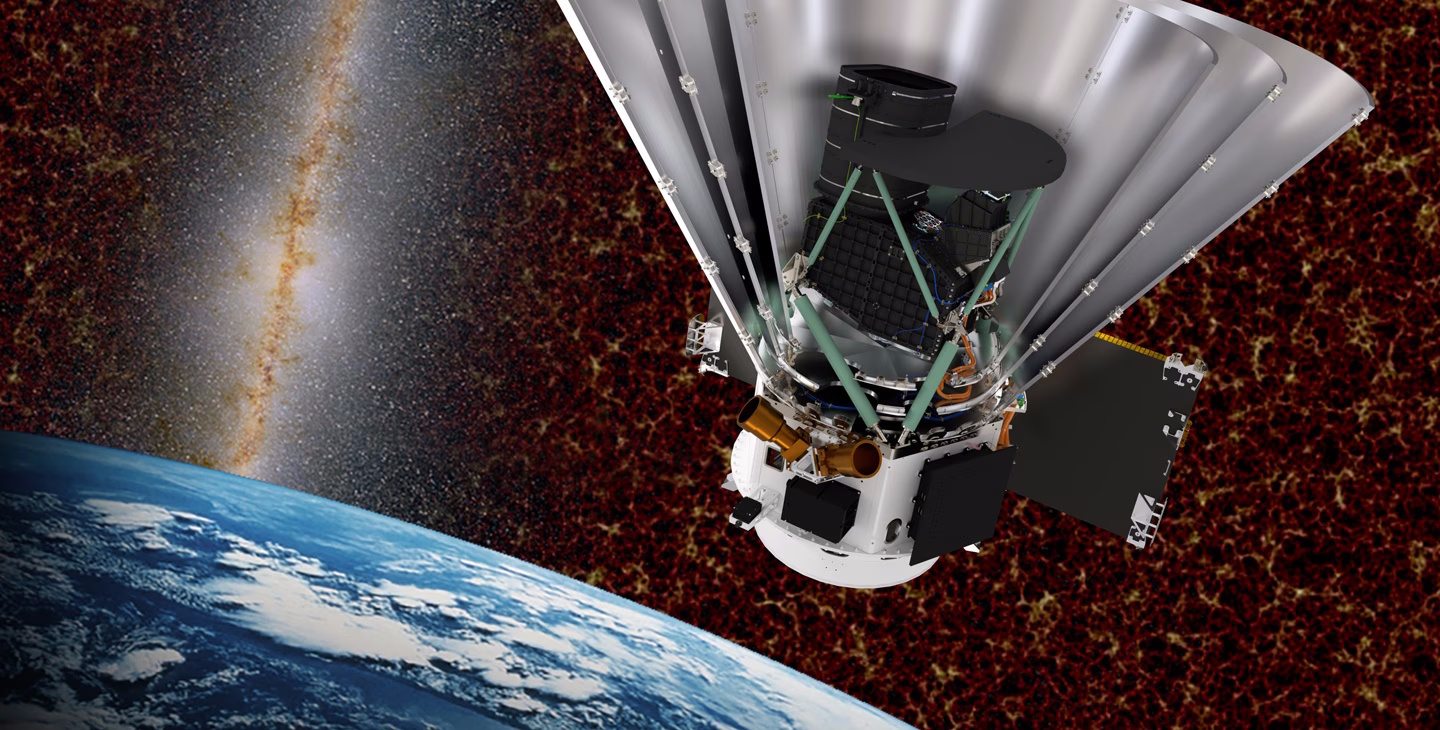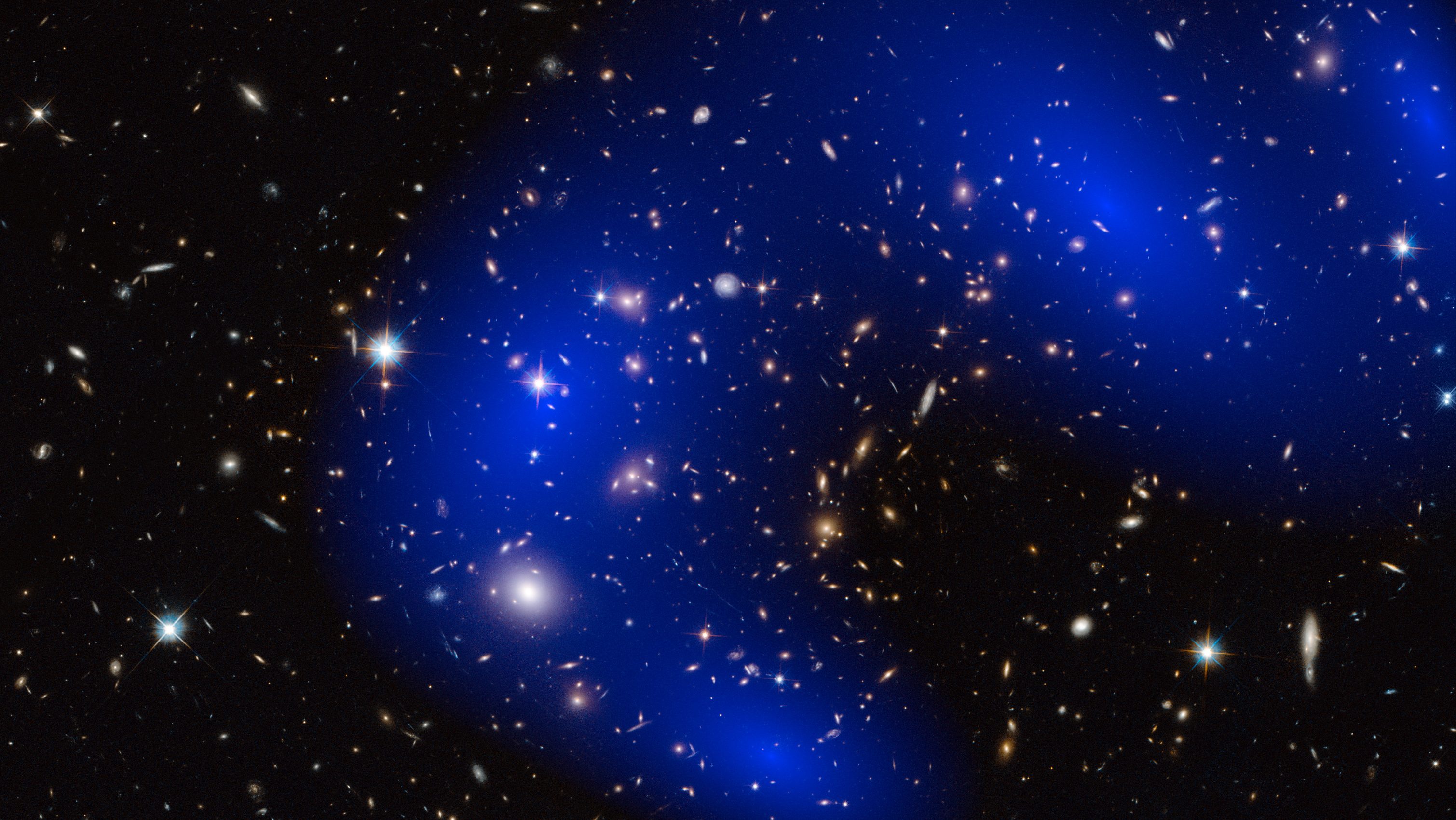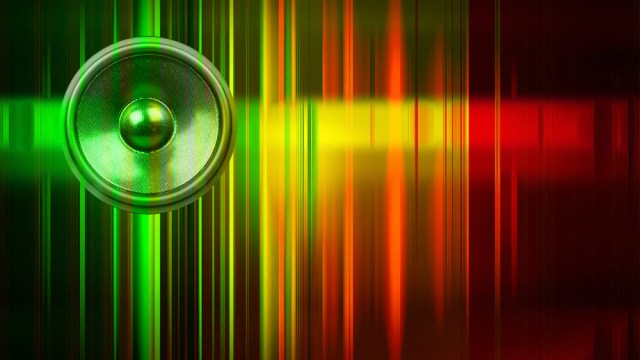Messier Monday: A Miniature Marvel, M70
At the bottom of the teapot in Sagittarius, the ancient giants burn for your pleasure.
Image credit: REU program / NOAO / AURA / NSF.
“I told my father that someday when I grow up and become an astronomer ‘I’m going to discover something.’” –Thomas Bopp
Two-and-a-half centuries ago, when Charles Messier was first putting together his catalogue of deep-sky objects, it was with the intention of helping comet hunters. You see, most of the fixed deep-sky objects, as seen through a telescope by the human eye, look only like a faint, fuzzy, nebulous cloud, quite similar to a comet. By recording the positions and attributes of the brightest star clusters, globular clusters, galaxies and nebulae, Messier endeavored to steer comet seekers away from these red herrings and towards the transient wonders of the heavens.
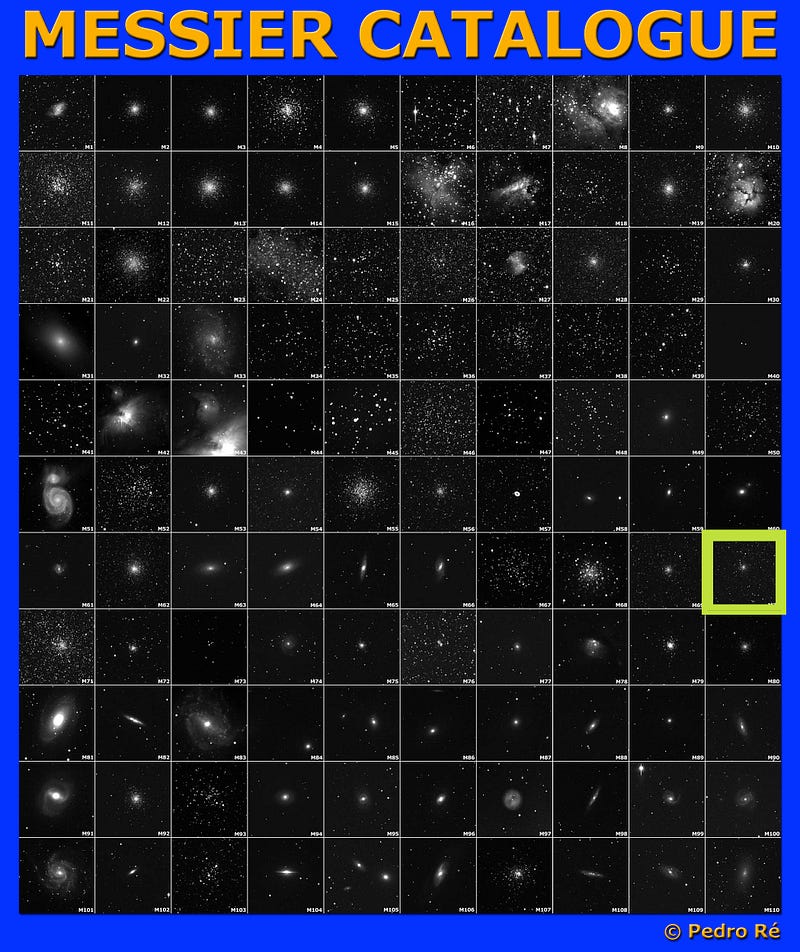
Since that time, Messier’s 110-object catalogue has taken on a life of its own; more astronomers — amateur and professional alike — have studied the objects in the Messier catalogue than any other. Yet today’s object, the globular cluster Messier 70, has brought the story back full circle. You see, the most famous and spectacular comet of the past century, Comet Hale-Bopp, was first discovered by chance by two amateurs — Alan Hale and Thomas Bopp — who happened to be observing this Messier object on July 23, 1995.
Here’s how to find it (the Messier object, not the comet) for yourself.

Still visible to those of us at high northern latitudes in the early part of the night, the constellation of Sagittarius boasts the famous asterism of the teapot. All eight of the teapot’s stars are clearly visible to the naked eye, even when they appear low on the horizon. If you want to find Messier 70, look to the two stars at the “base” of the teapot — Ascella and Kaus Australis — and head midway between them.
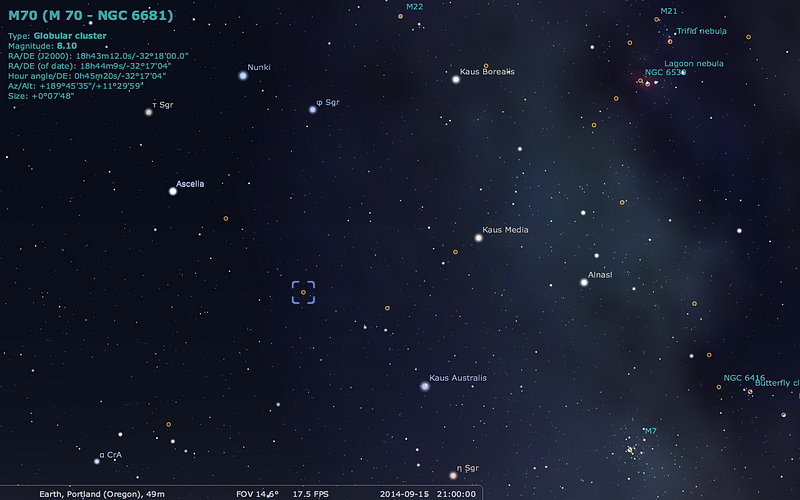
There are many deep-sky objects in the vicinity of this constellation, which is no surprise since it contains the galactic center. Many star-forming regions abound, including new clusters and the most centrally located globular clusters. Much like its neighbor in both the catalogue and the sky, M69, today’s object can be found by star-hopping from Kaus Australis towards Ascella.
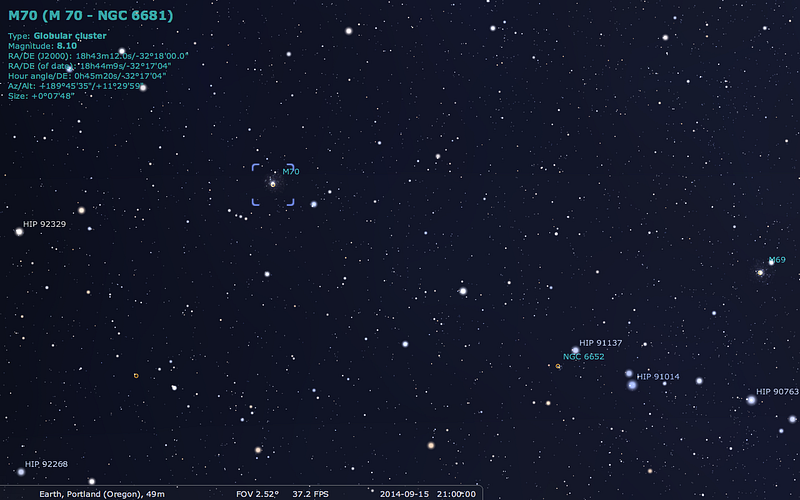
In particular, three stars near the limit of unaided human vision but clearly visible through a low-power telescope or pair of binoculars — HIP 90763, HIP 91014, and the slightly fainter HIP 91137 — form a line that points towards Messier 70. Through a low-power telescope, here’s what you’re likely to see.
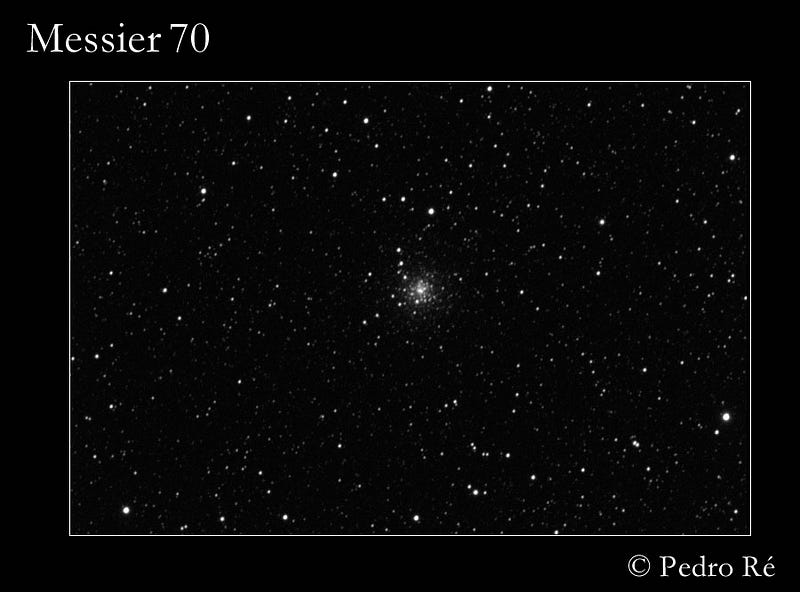
A small, faint, fuzzy object that — dependent on your telescope’s aperture and the quality of your optics — may or may not be resolvable into individual stars. An original discovery by Messier himself, he described it as:
Nebula without star, near the preceding, & on the same parallel: near it is a star of the nineth magnitude & four small telescopic stars, almost on the same straight line, very close to one another, & are situated above the nebula, as seen in a reversing telescope.
It’s only by chance that, 215 years after its discovery, two amateur skywatchers observing it located a comet nearby, which happened to turn into the comet-of-the-century.
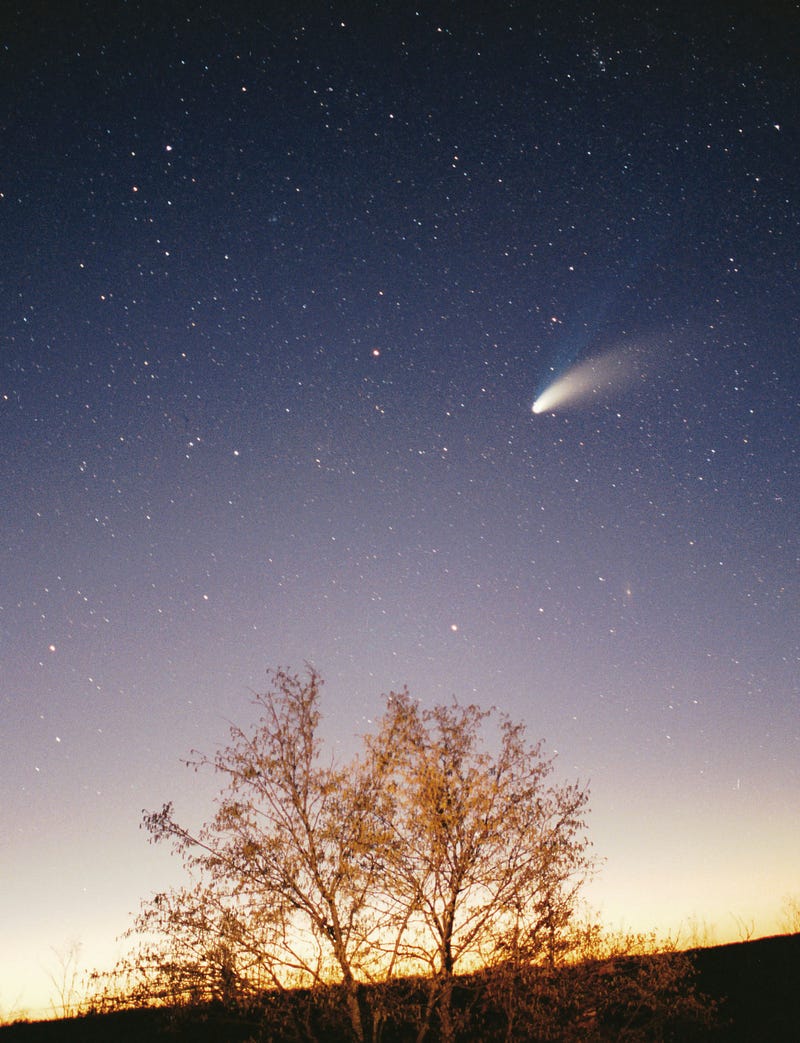
It’s only because we’ve catalogued the fixed deep-sky objects above a certain brightness that we could so quickly identify this as a comet, and that Thomas Bopp and Alan Hale could both independently make the discovery-of-a-lifetime with relatively simple, modern equipment.
But while Hale-Bopp presently heads to the outer Solar System, not to return for more than four millennia, Messier 70 remains in exactly the same place it’s always been.
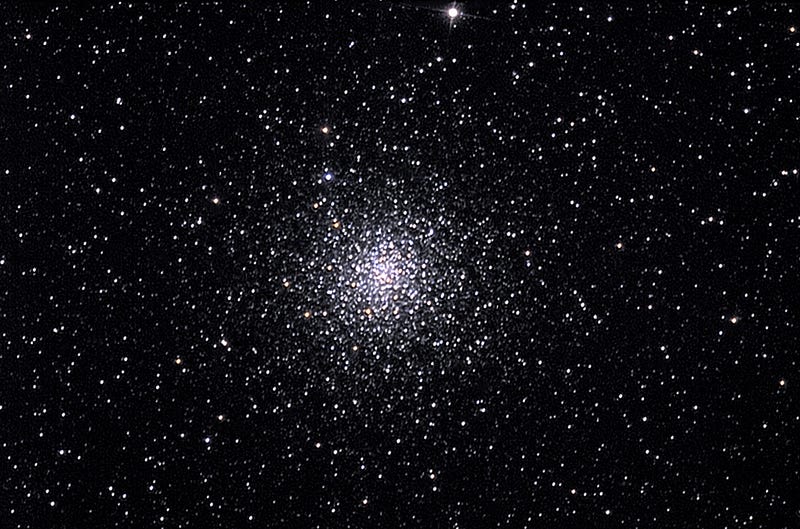
Some 29,300 light-years away, Messier 70 is a very old globular star cluster, containing some 180,000 solar masses and having formed just about a billion years after the Big Bang.
How do we tell how old a cluster like this is? We look at the stars inside, and plot their color (on the x-axis) vs. their magnitudes (on the y-axis). Where the curve “turns off” toward the upper-right tells us where the brightest main-sequence stars are evolving into red giants.
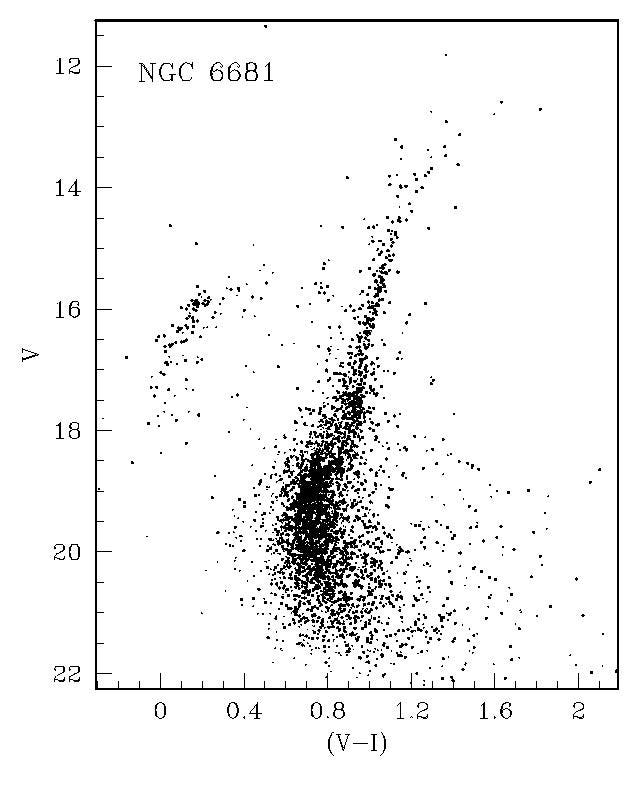
Very similar to Messier 69, all the blue stars have long since died, with only stars comparable to the Sun and redder remaining. The stars at the upper left of the diagram, above, are blue straggler stars, or stars that came about from the mergers of lower-mass stars. Messier 70 is a little more metal-poor than its neighbor, however, as it only contains about 4.5% the heavy elements contained in our Sun.
This might strike you as strange: Messier 69 and Messier 70 are separated by only 1,800 light-years or so, they’re both close to the galactic center and close to the same age, but Messier 69 — which is slightly older than Messier 70 — has five times the heavy elements found in its neighbor! Why would one be so metal-rich and the other so metal-poor? Because Messier 69 always remains close to the galactic center, while Messier 70 moves in-and-out in a highly eccentric orbit!

We normally talk about globular clusters as being of a certain concentration class, which talks about how dense their cores are as compared to how quickly their brightness fades away. Messier 70 is nothing special in that department, rating as a class V on a scale of I to XII. But quite unusually, the very, very center of this globular is incredibly and unusually dense! Let’s take a look, courtesy of the Hubble Space Telescope.
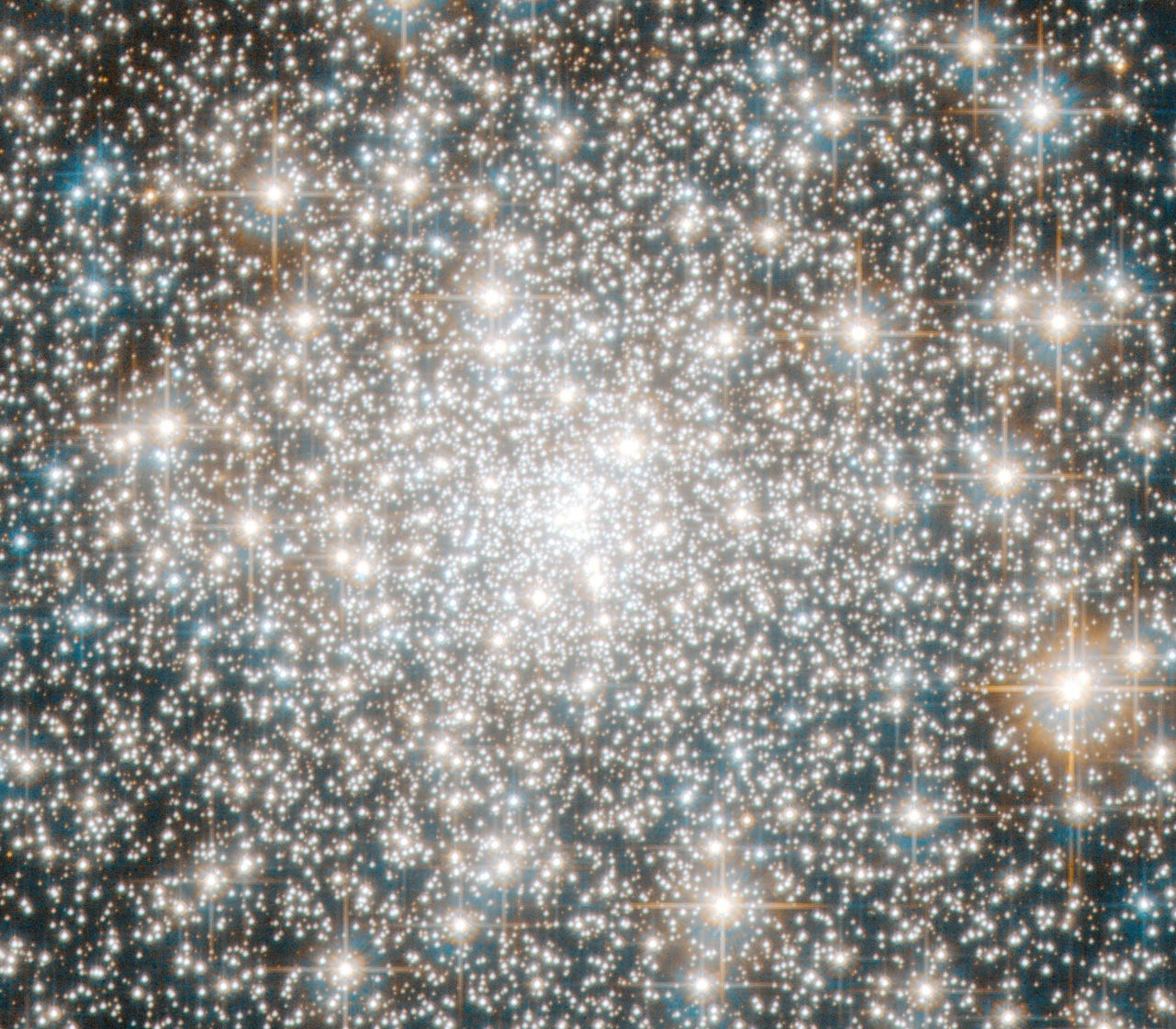
There are a great many red giants inside of absolute magnitude 10-to-12, making them stand out in telescopes that are about 8″ (200 mm) or larger in aperture, but one of the things I find most interesting about this is that despite the fact that most of the stars are red, we can actually learn a lot about what’s going on inside by looking in the Ultraviolet! Below you can see the Hubble Space Telescope’s view of a region of M70 in the far and near ultraviolet, where red giants that are evolving (towards the blue) dominate the far-UV, but where cooler and less luminous stars, including sun-like stars, blue stragglers and redder giants start to show up in the near-UV.
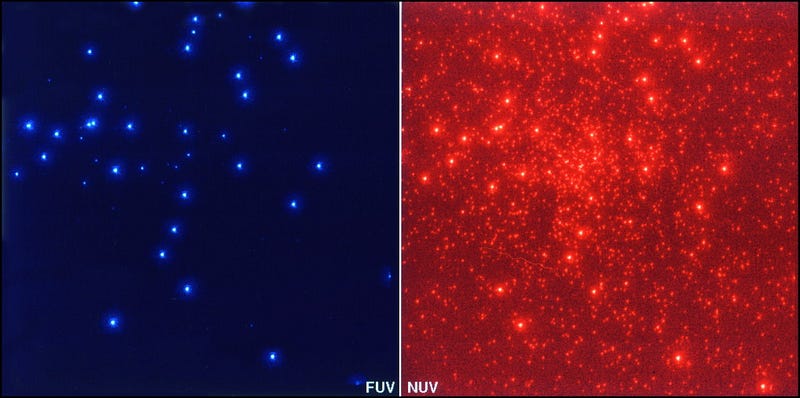
© 1998. The American Astronomical Society.
If we combine Hubble’s ultraviolet views of the entire cluster, here’s what we see.
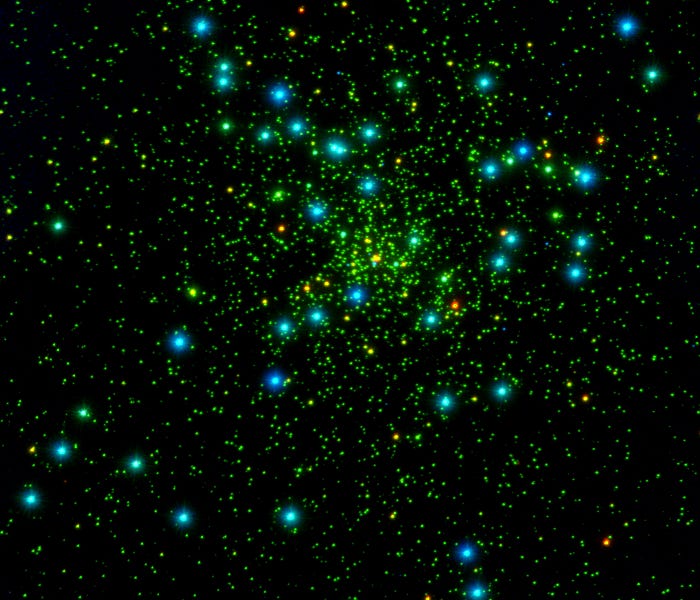
We see evolved, giant stars that aren’t particularly clustered towards the center, but we do see a large number of fainter, near-UV stars that reside there. What could be the cause of this?
There’s no reason for Sun-like stars — the ones that approach their end-of-life after ~12.8 billion years — to preferentially cluster near the center. But in general, there simply are more stars near the center of all types!
Visible light images taken by Hubble confirm exactly this: giant stars dotted around the cluster, with a huge central concentration irrespective of star type.
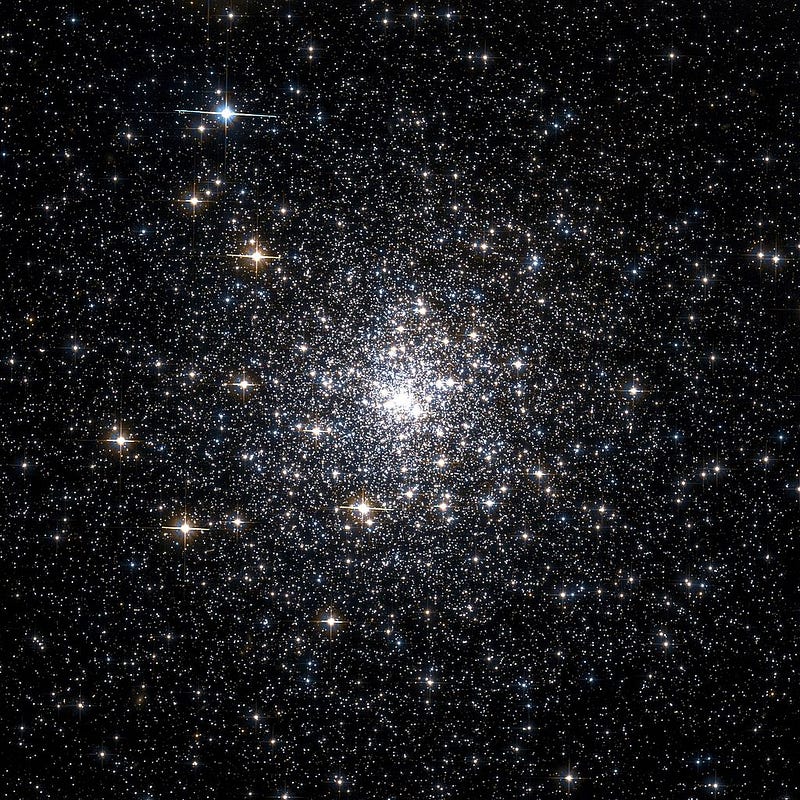
It may not seem obvious what’s going on near and away from the core, so let’s take a full-resolution slice through this image to give you a better idea.

There are literally tens if not hundreds of thousands of stars in here, and it takes the light from all of them for us to figure out what this cluster is all about! And with those beautiful images, we come to the end of our 100th Messier Monday. With only ten objects left, let’s take a look back at the 100 objects we’ve covered together:
- M1, The Crab Nebula: October 22, 2012
- M2, Messier’s First Globular Cluster: June 17, 2013
- M3, Messier’s First Original Discovery: February 17, 2014
- M4, A Cinco de Mayo Special: May 5, 2014
- M5, A Hyper-Smooth Globular Cluster: May 20, 2013
- M6, The Butterfly Cluster: August 18, 2014
- M7, The Most Southerly Messier Object: July 8, 2013
- M8, The Lagoon Nebula: November 5, 2012
- M9, A Globular from the Galactic Center: July 7, 2014
- M10, A Perfect Ten on the Celestial Equator: May 12, 2014
- M11, The Wild Duck Cluster: September 9, 2013
- M12, The Top-Heavy Gumball Globular: August 26, 2013
- M13, The Great Globular Cluster in Hercules: December 31, 2012
- M14, The Overlooked Globular: June 9, 2014
- M15, An Ancient Globular Cluster: November 12, 2012
- M18, A Well-Hidden, Young Star Cluster: August 5, 2013
- M19, The Flattened Fake-out Globular: August 25, 2014
- M20, The Youngest Star-Forming Region, The Trifid Nebula: May 6, 2013
- M21, A Baby Open Cluster in the Galactic Plane: June 24, 2013
- M23, A Cluster That Stands Out From The Galaxy: July 14, 2014
- M24, The Most Curious Object of All: August 4, 2014
- M25, A Dusty Open Cluster for Everyone: April 8, 2013
- M27, The Dumbbell Nebula: June 23, 2014
- M28, The Teapot-Dome Cluster: September 8, 2014
- M29, A Young Open Cluster in the Summer Triangle: June 3, 2013
- M30, A Straggling Globular Cluster: November 26, 2012
- M31, Andromeda, the Object that Opened Up the Universe: September 2, 2013
- M32, The Smallest Messier Galaxy: November 4, 2013
- M33, The Triangulum Galaxy: February 25, 2013
- M34, A Bright, Close Delight of the Winter Skies: October 14, 2013
- M36, A High-Flying Cluster in the Winter Skies: November 18, 2013
- M37, A Rich Open Star Cluster: December 3, 2012
- M38, A Real-Life Pi-in-the-Sky Cluster: April 29, 2013
- M39, The Closest Messier Original: November 11, 2013
- M40, Messier’s Greatest Mistake: April 1, 2013
- M41, The Dog Star’s Secret Neighbor: January 7, 2013
- M42, The Great Orion Nebula: February 3, 2014
- M44, The Beehive Cluster / Praesepe: December 24, 2012
- M45, The Pleiades: October 29, 2012
- M46, The ‘Little Sister’ Cluster: December 23, 2013
- M47, A Big, Blue, Bright Baby Cluster: December 16, 2013
- M48, A Lost-and-Found Star Cluster: February 11, 2013
- M49, Virgo’s Brightest Galaxy: March 3, 2014
- M50, Brilliant Stars for a Winter’s Night: December 2, 2013
- M51, The Whirlpool Galaxy: April 15th, 2013
- M52, A Star Cluster on the Bubble: March 4, 2013
- M53, The Most Northern Galactic Globular: February 18, 2013
- M56, The Methuselah of Messier Objects: August 12, 2013
- M57, The Ring Nebula: July 1, 2013
- M58, The Farthest Messier Object (for now): April 7, 2014
- M59, An Elliptical Rotating Wrongly: April 28, 2014
- M60, The Gateway Galaxy to Virgo: February 4, 2013
- M61, A Star-Forming Spiral: April 14, 2014
- M62, The Galaxy’s First Globular With A Black Hole: August 11, 2014
- M63, The Sunflower Galaxy: January 6, 2014
- M64, The Black Eye Galaxy: February 24, 2014
- M65, The First Messier Supernova of 2013: March 25, 2013
- M66, The King of the Leo Triplet: January 27, 2014
- M67, Messier’s Oldest Open Cluster: January 14, 2013
- M68, The Wrong-Way Globular Cluster: March 17, 2014
- M69, A Titan in a Teapot: September 1, 2014
- M70, A Miniature Marvel: September 15, 2014
- M71, A Very Unusual Globular Cluster: July 15, 2013
- M72, A Diffuse, Distant Globular at the End-of-the-Marathon: March 18, 2013
- M73, A Four-Star Controversy Resolved: October 21, 2013
- M74, The Phantom Galaxy at the Beginning-of-the-Marathon: March 11, 2013
- M75, The Most Concentrated Messier Globular: September 23, 2013
- M77, A Secretly Active Spiral Galaxy: October 7, 2013
- M78, A Reflection Nebula: December 10, 2012
- M79, A Cluster Beyond Our Galaxy: November 25, 2013
- M80, A Southern Sky Surprise: June 30, 2014
- M81, Bode’s Galaxy: November 19, 2012
- M82, The Cigar Galaxy: May 13, 2013
- M83, The Southern Pinwheel Galaxy, January 21, 2013
- M84, The Galaxy at the Head-of-the-Chain, May 26, 2014
- M85, The Most Northern Member of the Virgo Cluster, February 10, 2014
- M86, The Most Blueshifted Messier Object, June 10, 2013
- M87, The Biggest One of them All, March 31, 2014
- M88, A Perfectly Calm Spiral in a Gravitational Storm, March 24, 2014
- M89, The Most Perfect Elliptical, July 21, 2014
- M90, The Better-You-Look, The Better-It-Gets Galaxy, May 19, 2014
- M91, A Spectacular Solstice Spiral, June 16, 2014
- M92, The Second Greatest Globular in Hercules, April 22, 2013
- M93, Messier’s Last Original Open Cluster, January 13, 2014
- M94, A double-ringed mystery galaxy, August 19, 2013
- M95, A Barred Spiral Eye Gazing At Us, January 20, 2014
- M96, A Galactic Highlight to Ring in the New Year, December 30, 2013
- M97, The Owl Nebula, January 28, 2013
- M98, A Spiral Sliver Headed Our Way, March 10, 2014
- M99, The Great Pinwheel of Virgo, July 29, 2013
- M100, Virgo’s Final Galaxy, July 28, 2014
- M101, The Pinwheel Galaxy, October 28, 2013
- M102, A Great Galactic Controversy: December 17, 2012
- M103, The Last ‘Original’ Object: September 16, 2013
- M104, The Sombrero Galaxy: May 27, 2013
- M105, A Most Unusual Elliptical: April 21, 2014
- M106, A Spiral with an Active Black Hole: December 9, 2013
- M107, The Globular that Almost Didn’t Make it: June 2, 2014
- M108, A Galactic Sliver in the Big Dipper: July 22, 2013
- M109, The Farthest Messier Spiral: September 30, 2013
Next week, we’ll begin counting down our final 10 Messier objects, so don’t miss it!
Leave your comments at the Starts With A Bang forum on Scienceblogs!
